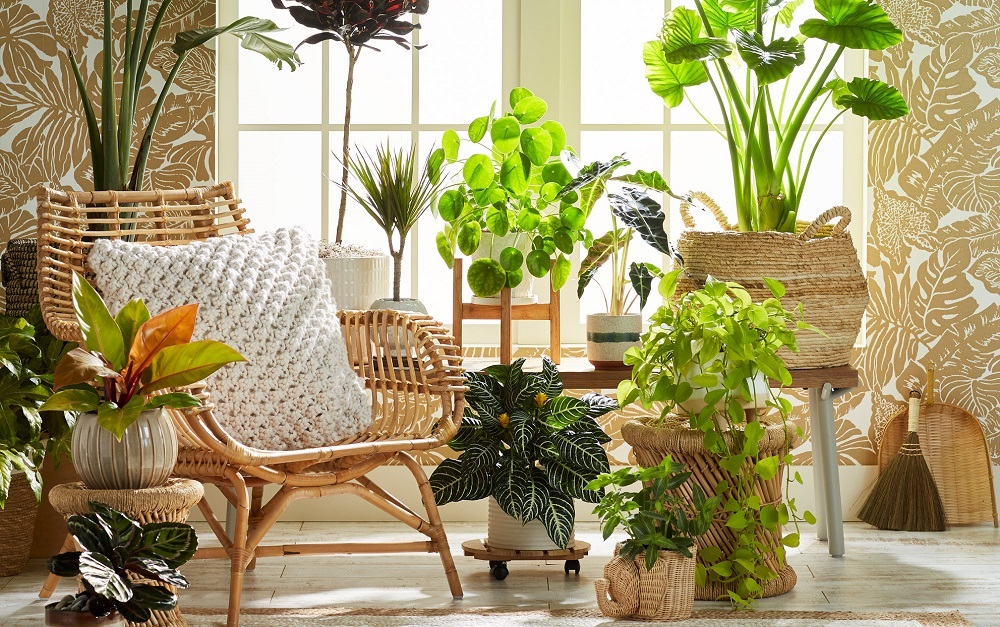If the chilled winter weather stops you from harvesting or you have limited gardening space in the backyard, starting an indoor garden is an ideal solution.
People think winter means the growing season is over. However, with proper methods and tools, it’s not difficult to grow certain vegetables, herbs and fruits inside the house. The process requires more care and different arrangements like artificial lights but produces amazing results.
So, are you ready for the experiment? Follow the step-by-step guide to grow an indoor garden by yourself.
How To Grow An Indoor Garden?
Step 1: Choose Vegetables and Herbs
Before you prepare soil and sow seeds, determine which veggies, herbs or fruits can grow indoor. Then, based on the space and growing condition, you need to pick seeds.
Some best edible vegetables to grow indoor are Beet, Carrot, Bok Choy or Pac Choi, Lettuce, Kale, Mustard Greens, Mushrooms, Spinach etc.
Some indoor herbs are Mint, Basil, Oregano, Chives, Thyme, Italian Parsley and Sage. You can also try Bay Leaves and Rosemary but possibly in a cool basement to grow.
Step 2: Prepare Indoor Garden Location
Some plants require natural sunlight, whereas some can grow under artificial light. You can place the pots near the window. However, if you’ve zero sunlight, go for fluorescent bulbs or LED lights for optimal growth.
Follow the quick process to build a grow light system for growing houseplants:
- Gather the components: 2-3 tire steel shelving units, 24’’ inch lights, S-hooks, plant growing trays and power strips with timer.
- Assemble the system in a cool area (spare room or basement).
- Remove wooden stoves or excess heat resources.
- Hang the lights 2-inches above the plants.
- Ensure the plants get light 12-16 hours a day.

Step 3: Select Containers
Small varieties like pepper or tomatoes can grow into 1-2 gallon pots. Whereas, for larger or root plants like beets, a 3-5 gallon pot is needed. You can try multiple planting in the same pot but using separate containers give plants space to grow properly.
Moreover, you need to ensure the containers have drainage holes. So, the seeds won’t get overwatered or underwatered. You can buy self-watering containers. They’re able to hold water underneath the plants like a water storage tank.
Placing decorated and colorful pots inside make the room beautiful. To add extra creativity, turn the garden tools into art using plasma cutter.
Plasma cutting is the process of cutting through electrically conductive metals by hot plasma. The cutting current speed can be 20-150A with a cutting depth 40mm or more. For example, you can turn an old handsaw into a tree through plasma cutting.
Step 4: Prepare the Soil
Do not plan to dig up some soil from a neighbor’s garden or backyard. That can lack nutrition compounds. Further, the soil texture like too heavy, thick or soggy won’t do good for your indoor plants. Then, the water holding capacity is another serious concern.
Hence, it’s advisable to use a good potting mix for the indoor garden. It is well-balanced composed of peat moss, perlite, vermiculite and coir in order to hold moisture as well as provide proper drainage.
You can check the bag labels to know if that potting mix will work or not. Don’t forget to see whether it contains nitrogen. It’s an essential ingredient for any plant growth and healthy green leaves.

Step 5: Plant Seeds
When you’re ready with the soil in the pot, it’s time to plant seeds. Choose seeds with high germination rates and suitable for the current season or your arranged artificial environment.
People often keep seeds in a cool and dark space for years. Though they can stay for a long time, germination rates get decreased with age. Let’s take a quick glance at the process of planting seeds:
- Check the seed packet to know the planting depth.
- Depending on the seed size, plant them by pressing 2-3 times with the thumb.
- Plant extra seeds as not all will germinate.
- Keep the potting mix a little moist until the sprouts come out.
Step 6: Add Fertilizer and Keep Watering
The final step is watering the seeds, even after they’ve grown up. How much water it needs depends on the growing condition and plant age. But maintain the consistency and the time to water them.
Additionally, fertilizing the houseplants is equally important like outdoor plants. Always use certified fertilizer to get a balanced amount of nitrogen, phosphorus and potassium. For pot plants, adding liquid fertilizers sometimes is the best. With enough amount of water and nutrition, you’ll grow indoor plants sooner.
Conclusion
Starting and growing indoor plants is fun. It gives a nice look to the home and also provides fresh air inside. In the lockdown situation, growing your own veggies at home is not a bad idea. With a little effort and arrangement, you can create a fantastic garden






